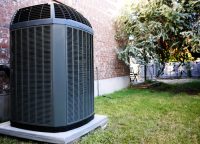Wood–Burning Heaters—Safety and Efficiency Tips
Wood-Burning Heaters—Safety and Efficiency Tips 1) Replace wood burning appliances manufactured before 1990 and only use EPA-Certified or EPA-Qualified appliances. According to the EPA, there are 12 million residential wood stoves in use in the United States and 9 million of those are older, not certified by the EPA and may be as much as […]










